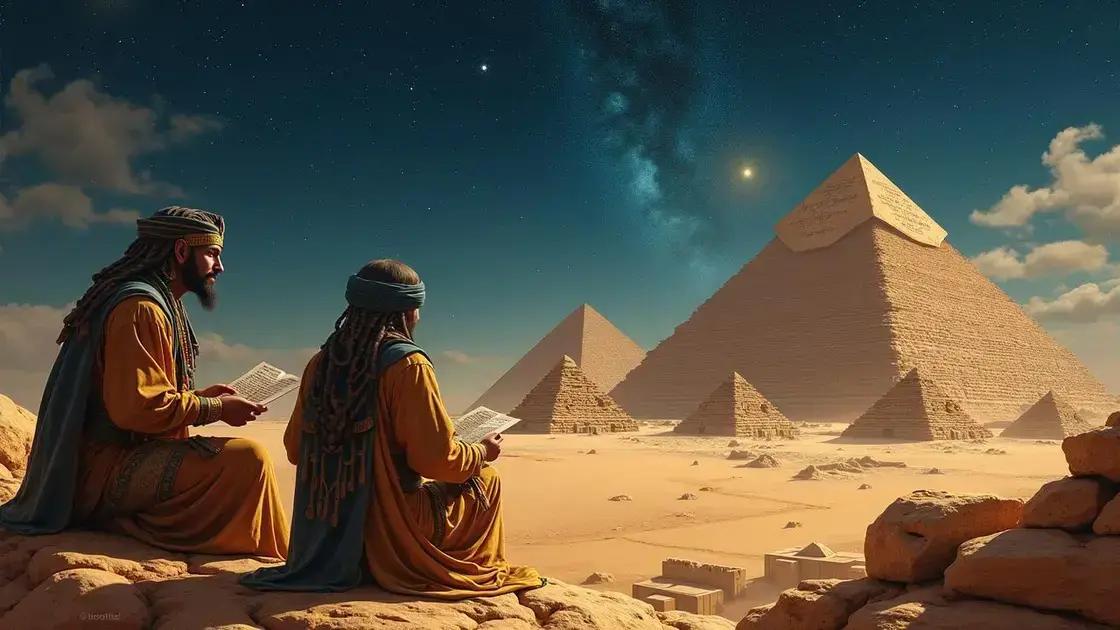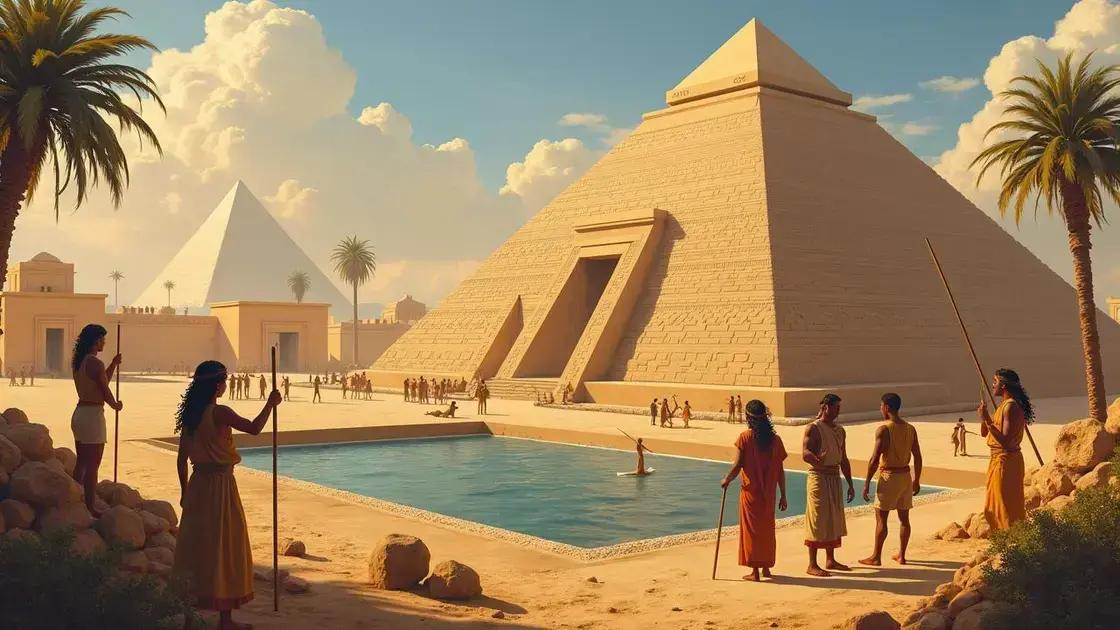Expert opinions on the Trick of the Egyptians reveal their innovative techniques in architecture, art, and agriculture, showcasing resourcefulness and creativity that still impact modern practices.
Throughout history, the Trick of the Egyptians has captivated scholars and enthusiasts alike. These intriguing techniques reveal secrets of ancient civilization that still puzzle experts today. With the insights of leading historians and archaeologists, we delve deeper into the mysteries surrounding these fascinating tricks. In this article, we will uncover the secrets and provide expert opinions on the practices of the Egyptians.
Unveiling the Egyptian Secrets

Many secrets lie beneath the sands of Egypt, waiting to be unveiled. The ancient Egyptians mastered various techniques, from engineering to art, that continue to impress scholars today. One major area of interest is their construction methods. How did they build massive structures like the pyramids? The exact strategies are still debated.
The Pyramids and Their Mystique
Pyramids, especially the Great Pyramid of Giza, are marvels of engineering. Some experts believe precise measurements and a deep understanding of mathematics played a role in their creation. They used simple tools for complex structures, showing how innovation can flourish with limited resources.
Writing and Communication
Hieroglyphics, the writing system of ancient Egypt, is another secret waiting to be deciphered. This intricate form of writing combines symbols and pictures to express ideas. It reflects the culture, religion, and daily life of Egyptians. Scholars study these symbols to unlock stories from centuries past.
Aside from construction and writing, the ancient Egyptians’ understanding of astronomy also remains a topic of interest. Their calendar was based on lunar cycles, which shows their advanced knowledge of the stars and planets. This understanding influenced agriculture and religious practices.
Cultural Practices and Beliefs
Lastly, their cultural practices reveal a rich history. The ancient Egyptians had a profound belief in the afterlife, which drove their elaborate burial traditions. Experts suggest that these practices aimed to ensure a safe journey to the afterlife, showcasing their values and spirituality.
By unveiling these Egyptian secrets, we gain insights into their innovative techniques and profound beliefs. Each discovery adds to our understanding of this fascinating civilization and its enduring legacy.
Expert Insights on Ancient Egyptian Tricks

Ancient Egyptians were known for their clever tricks, used in various aspects of their daily lives. One significant aspect was their approach to architecture. They employed specific techniques to construct grand buildings without modern equipment. They utilized simple tools but designed them ingeniously, allowing them to move heavy stones with surprising ease.
Illusions and Perceptions
Another fascinating element is their use of optical illusions in art and architecture. For example, some structures appear taller or wider than they are due to clever design. This understanding of visual trickery was vital for religious and ceremonial purposes, enhancing the experience for worshippers.
Water Management Tricks
The Egyptians also mastered water management through irrigation techniques. By diverting the Nile, they created fertile land in the desert, showcasing their ingenuity. Knowledge of natural landscapes allowed them to create effective systems for farming, maximizing yields and sustaining their civilization.
In addition to agriculture, they used simple machinery for tasks like grinding grain and lifting water. This not only labor-saving but enabled them to support a growing population. Understanding these tricks reveals their resourcefulness and adaptability.
Ceremonial Practices
Ceremonial practices often included striking visual tricks that captivated participants. They used colors, music, and dance to create engaging experiences. These performances were not just for entertainment; they played essential roles in religious rituals and societal cohesion.
By examining these ancient Egyptian tricks, we gain an appreciation for their innovative spirit and ability to manipulate their environment, which contributed to their long-lasting civilization.
In Summary: The Genius of Ancient Egyptians
The ancient Egyptians demonstrated remarkable ingenuity through their tricks and techniques, from their architectural marvels to their understanding of water management. Their ability to create optical illusions and captivating ceremonial practices highlights their deep connection to art and culture.
By exploring the insights and secrets of this fascinating civilization, we can appreciate the innovation that shaped their society and influenced future generations. The lessons from their resourcefulness and creativity inspire us to think critically about problem-solving today.
Understanding the tricks of the Egyptians offers a glimpse into their world, showcasing the enduring legacy of their achievements.
FAQ – Frequently Asked Questions about the Tricks of the Egyptians
What techniques did the ancient Egyptians use in architecture?
The ancient Egyptians employed simple tools and innovative design methods to construct massive structures like the pyramids.
How did they create optical illusions in their art?
They used clever design principles that manipulated size and perspective, making structures appear larger or taller than they actually were.
What irrigation techniques did the Egyptians develop?
The Egyptians devised advanced irrigation systems that allowed them to divert the Nile River to create fertile land in the surrounding desert.
How did ceremonial practices showcase ancient Egyptian tricks?
Their ceremonies incorporated visual tricks, colors, music, and dance to create engaging experiences that complemented their religious rituals.
Why is studying ancient Egyptian tricks important today?
Understanding their innovative practices provides insight into their civilization and can inspire modern problem-solving and creativity.
What aspects of Egyptian culture are still relevant today?
The principles of resourcefulness, creativity, and skilled craftsmanship from ancient Egypt continue to influence architecture, art, and engineering.












